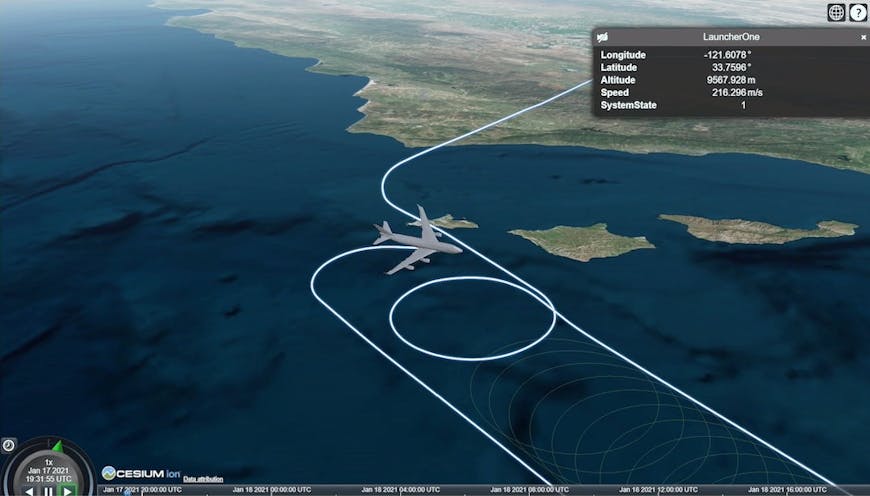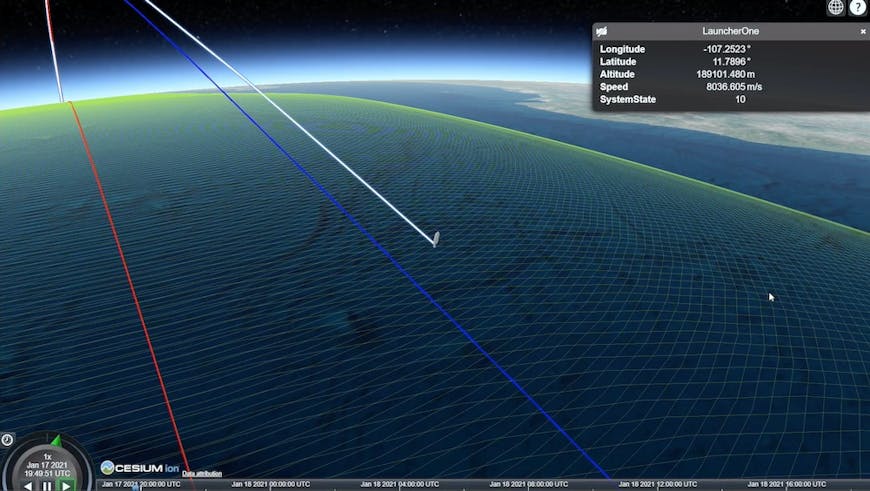Cesium Supports Virgin Orbit's Successful Satellite Launch
After years of watching Cesium at work tracking objects in space, we’re thrilled to now be part of getting objects into space. Aerospace is in our DNA: first built to visualize the thousands of satellites orbiting Earth, Cesium has long supported the precision, dynamics, and scale required for aerospace applications.

Virgin Orbit live tracking visualization built with Cesium ion.
Virgin Orbit is using Cesium ion as part of their effort to get small satellites, including CubeSats, into orbit. Small satellites in low Earth orbit support weather forecasting, scientific measurements, agricultural planning, environmental monitoring, and defense reconnaissance. Currently most of those satellites hitch a ride to space on larger rockets, but Virgin Orbit is planning to change that.
Rather than a traditional rocket pointing skyward, Virgin Orbit’s launch platform is Cosmic Girl, a Boeing 747. Like any other airplane, Cosmic Girl takes off from a traditional airport. When it reaches 35,000 feet, the plane releases LauncherOne, an orbital launch vehicle, from under its left wing. LauncherOne rockets into space, delivers the satellites it carries to their intended orbits.

Cosmic Girl and LauncherOne flight paths.
In its first successful mission, LauncherOne sent 10 CubeSat satellites into low Earth orbit on January 17 of this year. During that mission, Virgin Orbit’s software engineers used Cesium for their own live tracking of both Cosmic Girl and LauncherOne.

Launch Demo 2 Mission, January 17, 2021.
Their Cesium app provides valuable insights in tracking the “captive carry” phase, during which Cosmic Girl flies out to the drop point, as well as during the rocket flight itself. In the Launch Demo 2 Mission, telemetry from the rocket both allowed them to get a visual representation of LauncherOne as it flew into orbit and also informed their 3D model, supporting their work for future missions.

Live tracking of Launch Demo 2 Mission.
Virgin Orbit’s system is opening new possibilities for the fast-growing satellite market: with a dedicated delivery, customers won’t have to wait to get on the schedule of a large rocket launch, and with a rocket that can take off from any airport, they’ll have more flexibility in getting satellites into target orbits.
Cesium has gone from tracking satellites to helping launch them … and perhaps before long small satellites launched by Virgin Orbit will be capturing Earth imagery that we’ll be seeing visualized back in Cesium. To see your own data with Cesium, sign up for a free community account.